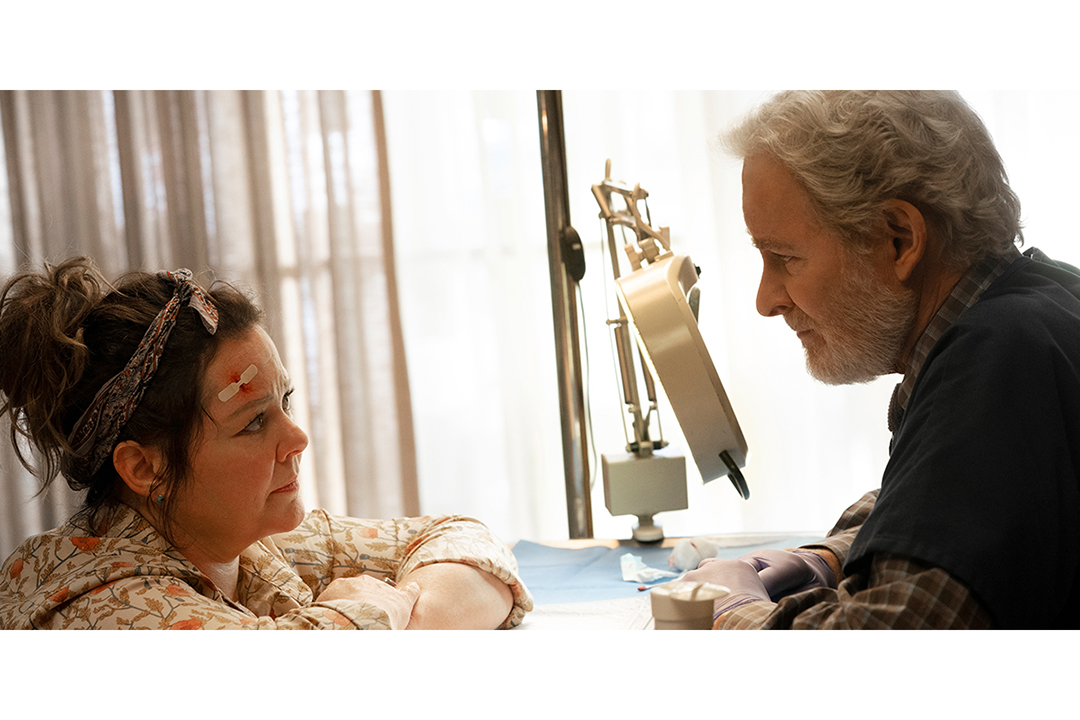Not all stories have to be big ones, though this may seem an unlikely lens through which to view the Toronto International Film Festival’s star-studded premiere of The Starling. But when this movie shines brightest, it’s by the incandescent glow of ordinary intimacy.
Directed by Theodore Melfi with a screenplay by Matt Harris, The Starling follows the parallel narratives of grief felt by Lilly Maynard, played by Melissa McCarthy, and Jack Maynard, played by Chris O’Dowd. After the death of their daughter, Katie, from sudden infant death syndrome, Lily and Jack find themselves on diverging paths.
Lily works in a supermarket, listlessly stacking food under the supervision of Timothy Olyphant, who plays her manager. Jack is staying in a mental health facility after a breakdown. Both seek guidance after the random cruelty of their daughter’s death; Jack searches for inner strength, and Lily looks to Dr. Larry, played by Kevin Kline, who is a former psychologist turned veterinarian.
Melfi’s greatest reward to the audience comes when he lets the actors explore the intimate nuances in their emotional journeys. In one of the most heart-wrenching scenes — after Lily impulsively moves her daughter’s furniture out of her house — she stares at the four indentations on the carpet where her child’s crib once stood. In a fervor, she gets down on her knees and brushes them until the carpet is smooth.
McCarthy may just be the brightest revelation of this movie. She never loses her signature comedic timing, sharpening her tongue before allowing her character to settle back in the grief and bewilderment of loss. Her relationship with Dr. Larry is refreshing, as they parry back and forth with wit and care.
But Lily and Dr. Larry’s friendship remained underdeveloped. With so much potential, it was disappointing to see it squandered by never fleshing out Dr. Larry’s character more. Who could be more interesting than a highly successful psychologist who gives it all up one day to work as a veterinarian in the countryside? Even the reason he eventually gave Lily for his departure from his field felt thin and rushed.
Instead, Dr. Larry seemed more like a motor to propel the movie forward. He offered enough insight to help rebuild Lily and Jack’s relationship, which made The Starling rely on the tired trope of a therapist providing emotional clarity. To the film’s credit, it makes sense that Lily would try to find guidance. But if a trope is to be used, it should be used well.
There were other parts that weighed down the movie. The symbolism behind the starling, for starters, played too strong a role. It felt like every 15 minutes, there was another perfectly framed scene that reminded me how important the bird was and how it signified another lesson for Lily.
The soundtrack also featured a confusing number of songs by The Lumineers, which cheapened its emotional scenes. I didn’t want a folksy, dramatic song perfectly encapsulating how a character felt in that moment — I wanted to see it in O’Dowd’s self-deprecating smile during his therapy appointments, or McCarthy’s gaze when she held the phone after her husband hung up on her wordlessly.
Those were the scenes that anchored the entire film: those that focused on the monotony of routine after loss, the conversations that turn on you before you realize it, the smallness of ordinary life, and the extraordinary pains we still suffer. But there is joy to be felt in such situations too, which Melfi reminds us.
Nothing in the film was sensational. I mean that as a compliment, really. It was the story of two people looking to heal and make sense of the randomness of tragedy. I only wish The Starling leaned further into the intimacy of its narrative.
It almost felt like a broken promise to its viewers. I thought I was going to see the pores of normalcy reflected back at me from the screen. Instead I kept noticing the airbrushing, however light and unevenly applied.


